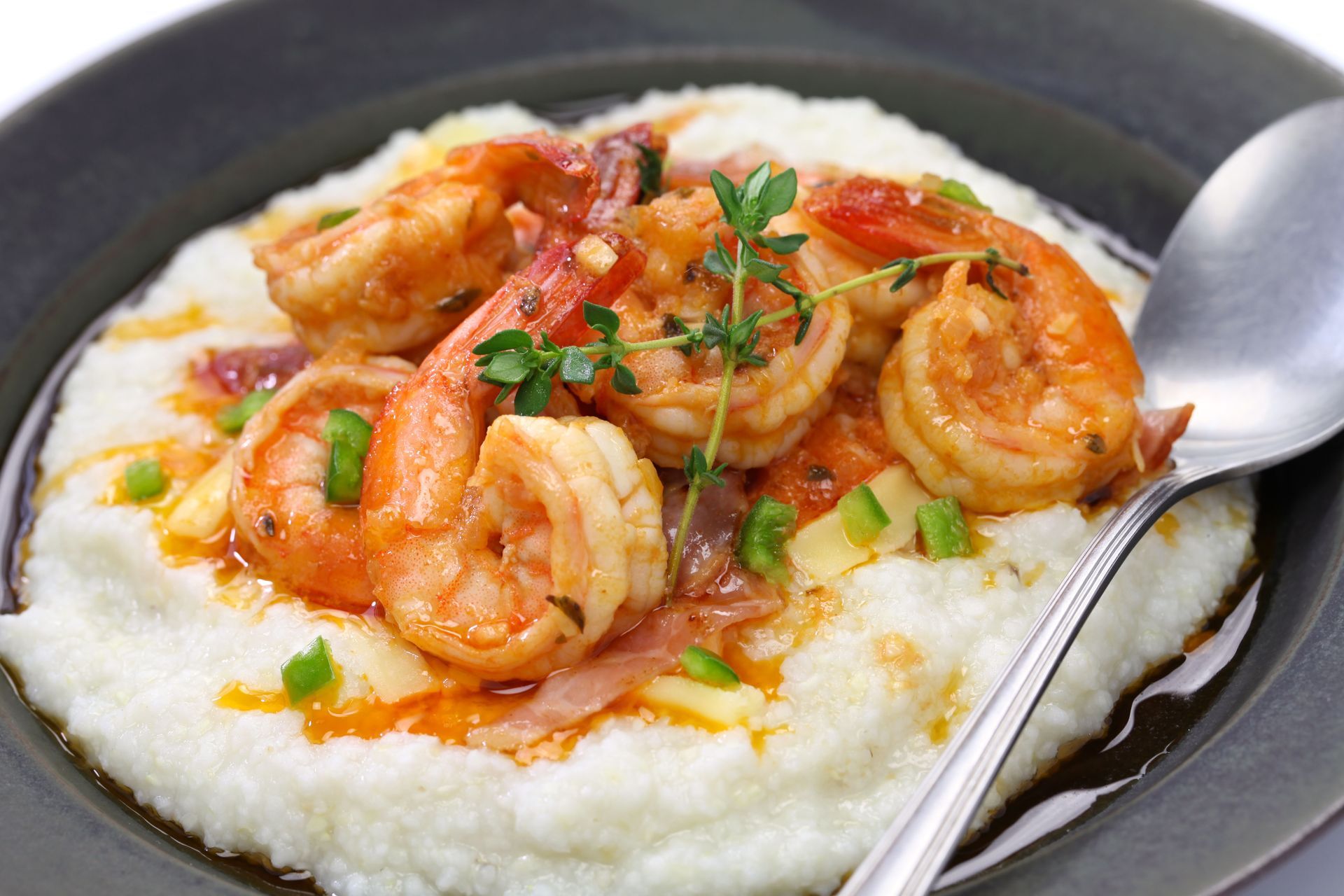Cajun Restaurants Celebrate History and Good Food with Cajun Cuisine
Cajun cuisine is far more than a style of cooking—it is a living representation of a rich cultural heritage that has thrived for centuries. Its flavors reflect a blend of French, Native American, African, and other influences, creating a unique and vibrant culinary tradition. From hearty stews to spicy rice dishes, Cajun cuisine embodies creativity, adaptability, and community spirit. Cajun restaurants play a vital role in preserving this culinary tradition, offering not only meals but also an immersive experience that connects diners to the history and culture of Louisiana. According to AllRecipes.com, a Cajun seasoning spice mix includes two and a half teaspoons of paprika, a key ingredient that gives the food its bold color and depth of flavor. These restaurants serve as cultural ambassadors, keeping this rich legacy alive while allowing contemporary audiences to explore and appreciate it.
Visiting a Cajun restaurant is an opportunity to taste history, creativity, and resilience on a plate. These establishments showcase the depth of flavors developed over centuries while providing a welcoming environment that celebrates the essence of Louisiana culture. From the moment diners enter, they are invited to experience more than just food—they are participating in a centuries-old tradition that values community, resourcefulness, and bold flavors.
The Roots of Cajun Cuisine
Traditional dishes in Louisiana developed from communities adapting to new environments and limited resources. People combined familiar cooking techniques with ingredients that were readily available, using staples like corn, beans, seafood, and local game. Methods such as smoking and slow cooking were also adopted to enhance flavor and preserve food, reflecting a practical and resourceful approach to meal preparation.
African influence was another critical layer in Cajun culinary evolution. Ingredients such as okra and seasoning blends rich in spices added boldness and depth to dishes like gumbo and jambalaya. This cultural fusion is a hallmark of Cajun cuisine, emphasizing creativity, adaptability, and the harmonious blending of diverse culinary traditions. Cajun restaurants continue this legacy by honoring historical cooking methods while presenting them in ways that are approachable to modern diners. The result is a cuisine that is simultaneously rooted in history and ever-evolving.
Signature Dishes and Their Significance
One of the most celebrated aspects of Cajun cuisine is its signature dishes, each reflecting centuries of tradition and innovation. Gumbo, often considered the quintessential Cajun dish, is a thick, hearty stew that combines French roux, African okra, and Native American herbs. Its complex textures and flavors illustrate the seamless integration of multiple cultural influences. Jambalaya, a vibrant rice dish with meats, seafood, vegetables, and spices, demonstrates the ingenuity of Cajun cooks in maximizing local ingredients while creating a balanced, satisfying meal.
Étouffée, which means “smothered” in French, is a slow-cooked dish often featuring seafood such as crawfish or shrimp. The careful layering of aromatics—onions, celery, bell peppers—combined with bold spices creates a rich, velvety sauce. Boudin and andouille sausages, meanwhile, showcase resourcefulness by using all parts of the animal while delivering smoky, spicy flavors that complement other dishes. Crawfish, celebrated in festivals and communal meals, highlights both the local bounty and the spirit of togetherness that defines Cajun culture. Cajun restaurants bring these dishes to life in ways that are authentic yet adaptable, allowing diners to savor history with every bite.
Spices, Seasonings, and Cooking Techniques
Cajun cuisine is defined by its bold flavors, skillful use of aromatics, and distinctive cooking techniques. The “Holy Trinity” of onions, bell peppers, and celery forms the flavor base of countless dishes, imparting a depth that is essential to authentic Cajun taste. Roux, a blend of flour and fat, is a foundational element used to thicken and enrich stews, soups, and sauces. Seasonings such as cayenne, paprika, garlic, and black pepper give dishes their characteristic heat and complexity, while herbs like thyme, parsley, and bay leaf provide subtle balance and fragrance.
Cooking methods such as blackening, slow simmering, and smothering enhance natural flavors and textures. Blackening involves searing proteins on high heat, creating a flavorful crust while preserving juiciness inside. Slow simmering allows ingredients to meld gradually, developing layered complexity in dishes like gumbo and étouffée. Smothering, a technique central to many Cajun recipes, ensures that ingredients remain tender while absorbing aromatic seasonings. Cajun restaurants excel in mastering these techniques, allowing patrons to experience dishes that are rich, satisfying, and deeply connected to the region’s culinary heritage.
The Experience of Dining at Cajun Restaurants
Dining at a Cajun restaurant is as much about atmosphere and community as it is about food. These establishments often feature rustic, welcoming interiors with décor that reflects Louisiana culture, from wood accents to local art and crafts. Music, particularly traditional Cajun and zydeco styles, adds a layer of immersion, turning a meal into a celebration of cultural identity. These environments are typically family-friendly, catering to guests of all ages while maintaining the warmth and hospitality that defines Cajun culture.
Local ingredients remain central to authenticity, ensuring that each dish reflects the bounty of the region. Fresh seafood, seasonal produce, and locally sourced meats connect diners to Louisiana’s natural resources. Cajun restaurants balance tradition with innovation, offering menu items that range from classic favorites to creative interpretations that incorporate global influences. By doing so, these establishments provide an experience that is both culturally enriching and gastronomically satisfying.
Community and Cultural Significance
Cajun restaurants serve as important cultural hubs, fostering community, celebration, and connection. They offer spaces where people can gather, share meals, and learn about a unique regional history. Through events, festivals, and educational programs, these establishments extend beyond their role as dining venues, promoting the preservation of cultural traditions and the history of Cajun cuisine.
By supporting local farmers, fishers, and artisans, Cajun restaurants contribute to regional economies and sustainability efforts. They also preserve traditional techniques and recipes, ensuring that future generations can experience authentic flavors. Whether it’s through a communal crawfish boil or a quiet dinner with family, these restaurants strengthen bonds and maintain the social fabric of communities. The cultural impact of Cajun restaurants goes beyond food—it’s about shared heritage, pride, and connection.
Innovation and the Future of Cajun Cuisine
As Cajun cuisine continues to grow in popularity, chefs and restaurateurs are innovating while respecting tradition. Modern interpretations may incorporate new ingredients, techniques, or international influences, but the core values of resourcefulness, bold flavors, and cultural fusion remain central. This balance between innovation and heritage ensures that the cuisine stays relevant to contemporary diners while maintaining its distinctive character.
Cajun restaurants are at the forefront of this evolution, combining historical recipes with creative presentations and modern dining concepts. The future of the cuisine is bright, with opportunities to explore sustainability, global inspiration, and culinary creativity. Diners can enjoy the best of both worlds: the rich history of these dishes alongside inventive creations that highlight adaptability and enduring appeal. By continuing to celebrate local ingredients, community traditions, and culinary artistry, these restaurants ensure that each dining experience is memorable, educational, and deeply connected to the culture it represents.
Experience the vibrant flavors, cultural richness, and communal spirit of Cajun cuisine by visiting Fired Up LLC today. Every meal is a celebration of history, creativity, and the shared traditions that make Cajun food truly unforgettable. By exploring these flavors, you’re not just enjoying a meal—you’re connecting with centuries of heritage and the passionate people who keep it alive.



Share On: